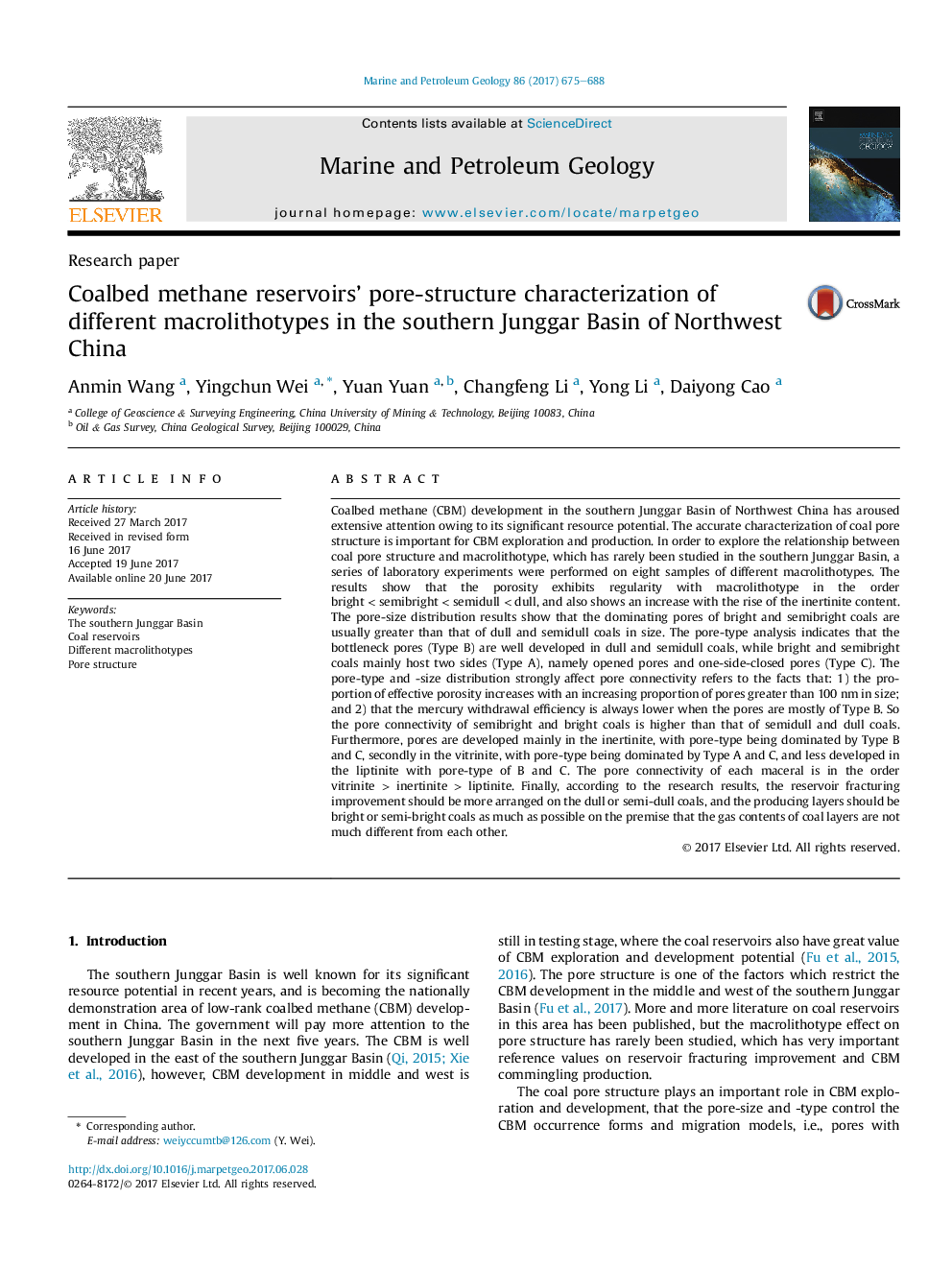| Article ID | Journal | Published Year | Pages | File Type |
|---|---|---|---|---|
| 5782000 | Marine and Petroleum Geology | 2017 | 14 Pages |
Abstract
Coalbed methane (CBM) development in the southern Junggar Basin of Northwest China has aroused extensive attention owing to its significant resource potential. The accurate characterization of coal pore structure is important for CBM exploration and production. In order to explore the relationship between coal pore structure and macrolithotype, which has rarely been studied in the southern Junggar Basin, a series of laboratory experiments were performed on eight samples of different macrolithotypes. The results show that the porosity exhibits regularity with macrolithotype in the order bright < semibright < semidull < dull, and also shows an increase with the rise of the inertinite content. The pore-size distribution results show that the dominating pores of bright and semibright coals are usually greater than that of dull and semidull coals in size. The pore-type analysis indicates that the bottleneck pores (Type B) are well developed in dull and semidull coals, while bright and semibright coals mainly host two sides (Type A), namely opened pores and one-side-closed pores (Type C). The pore-type and -size distribution strongly affect pore connectivity refers to the facts that: 1) the proportion of effective porosity increases with an increasing proportion of pores greater than 100 nm in size; and 2) that the mercury withdrawal efficiency is always lower when the pores are mostly of Type B. So the pore connectivity of semibright and bright coals is higher than that of semidull and dull coals. Furthermore, pores are developed mainly in the inertinite, with pore-type being dominated by Type B and C, secondly in the vitrinite, with pore-type being dominated by Type A and C, and less developed in the liptinite with pore-type of B and C. The pore connectivity of each maceral is in the order vitrinite > inertinite > liptinite. Finally, according to the research results, the reservoir fracturing improvement should be more arranged on the dull or semi-dull coals, and the producing layers should be bright or semi-bright coals as much as possible on the premise that the gas contents of coal layers are not much different from each other.
Keywords
Related Topics
Physical Sciences and Engineering
Earth and Planetary Sciences
Economic Geology
Authors
Anmin Wang, Yingchun Wei, Yuan Yuan, Changfeng Li, Yong Li, Daiyong Cao,
